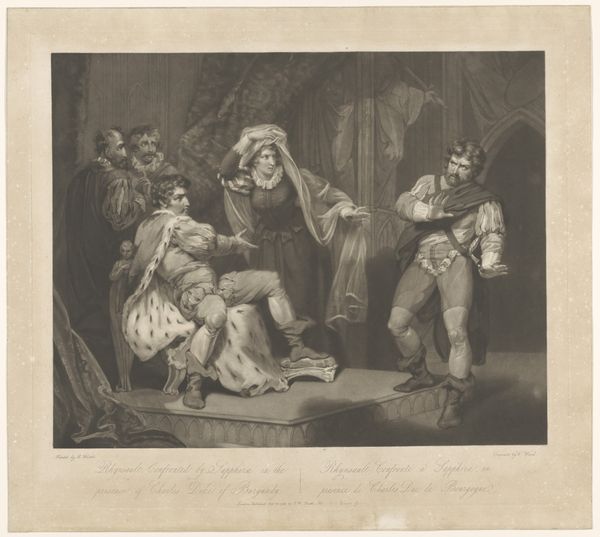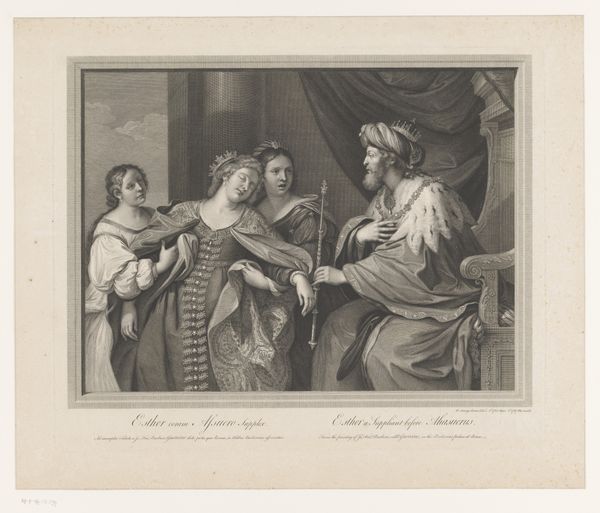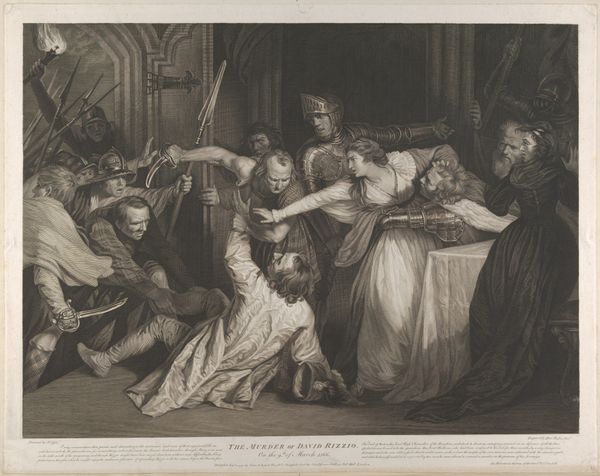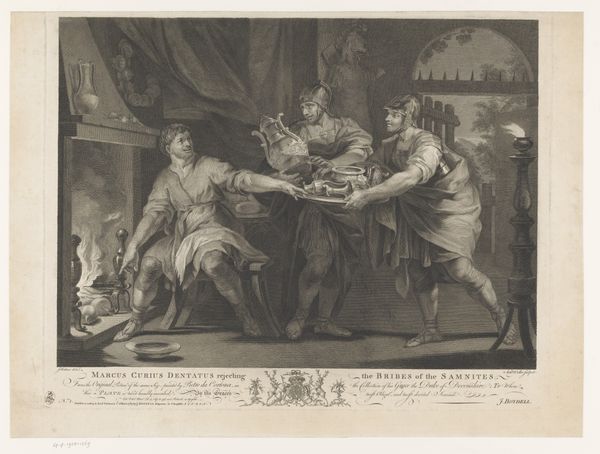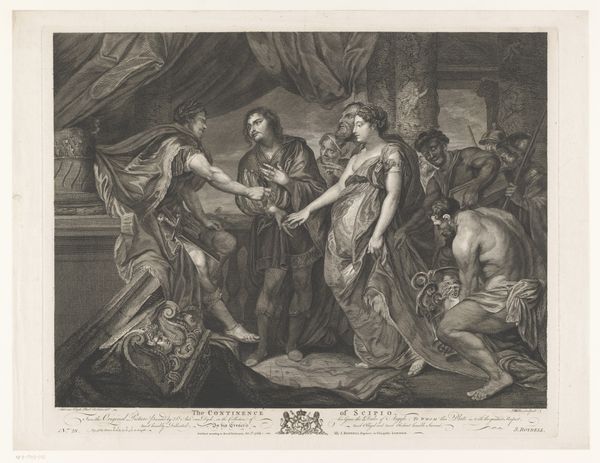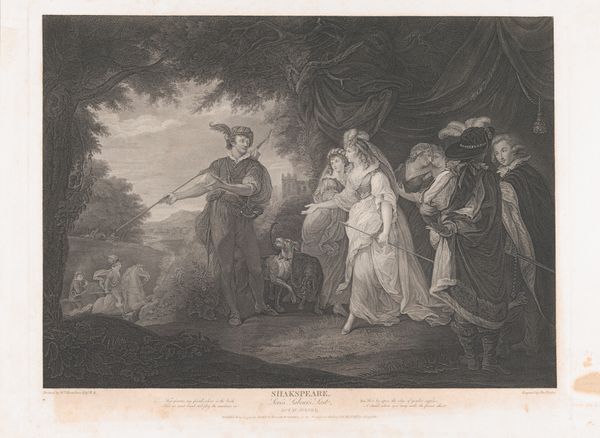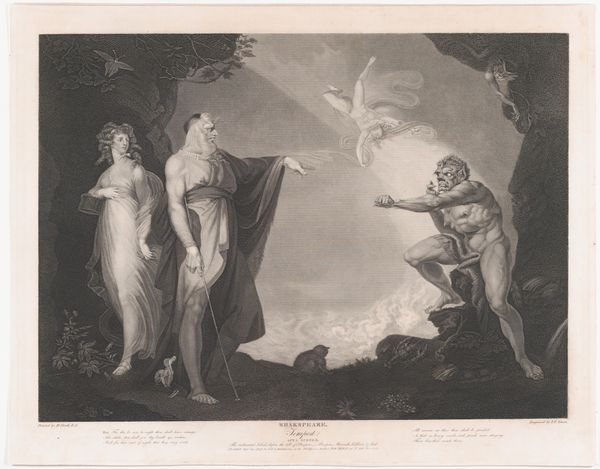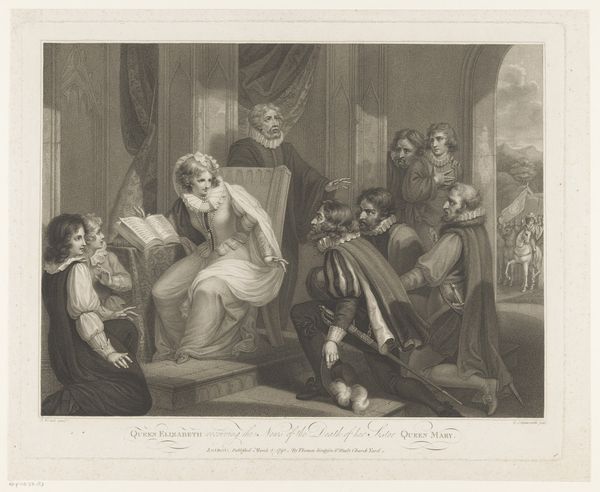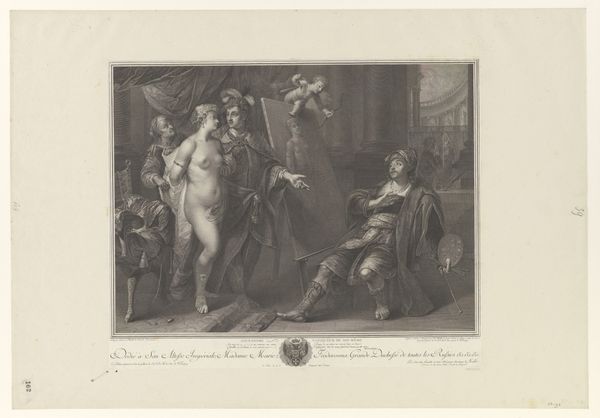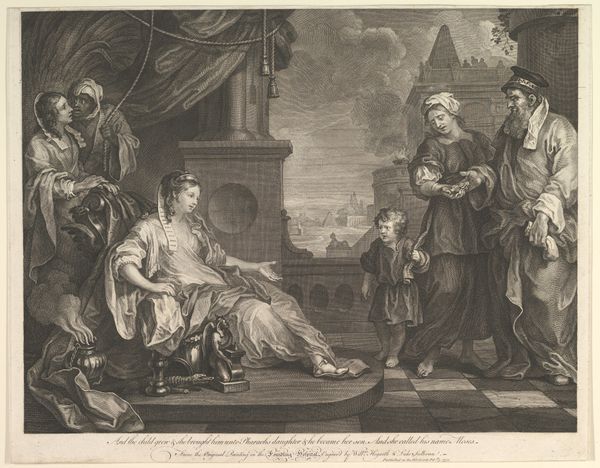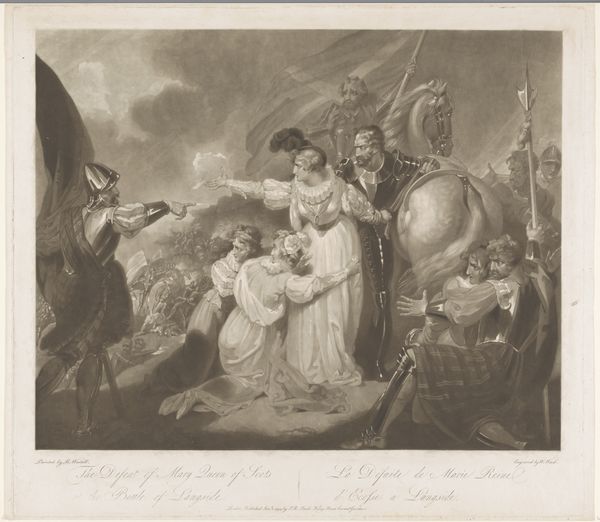
Dimensions: height 401 mm, width 503 mm, height 26 mm, width 502 mm
Copyright: Rijks Museum: Open Domain
Editor: This is "Portrait of David Garrick between Comedy and Tragedy," an engraving created by Edward Fisher in 1762. It depicts the famous actor torn between two allegorical figures. It has a very staged and performative feel to it, doesn’t it? What do you see happening in terms of its public appeal at the time? Curator: The staging is key, yes. Consider how theatre, and celebrity, were being marketed and consumed during this period. Engravings like this, readily reproducible, brought actors like Garrick into the domestic sphere. We're witnessing the birth of celebrity culture. Editor: So, it's like an early form of fan art, designed to circulate? Curator: Precisely. And what message is being circulated? Notice how Garrick is positioned. He isn’t simply *being* pulled by Comedy and Tragedy, he is also *displaying* his dilemma. His open posture, inviting gaze…It's not a private struggle, it’s a carefully constructed image of a virtuous, conflicted artist, navigating the moral complexities of his profession for his adoring public. This makes you wonder: How does this imagery enhance or challenge Garrick’s public persona? Editor: I suppose it elevated him beyond just being an entertainer; it added an intellectual and moral dimension. Sort of saying that entertainment should explore these difficult issues? Curator: Exactly. The print is thus less about Garrick's real life and more about constructing a public role, which reflects well on the theatre industry as a whole. Prints like this shaped public perception and lent the stage a veneer of intellectual seriousness and moral engagement. Think about who might have been buying this print? Were they theatre goers, other actors or wealthy patrons wanting to showcase a modern intellectual sensibility? Editor: That gives me a lot to think about – how art can build a kind of brand, not just for the individual but the profession they represent! Curator: Yes! And in examining that construction, we begin to see the social function of art itself in shaping public values and promoting particular ideals.
Comments
No comments
Be the first to comment and join the conversation on the ultimate creative platform.
